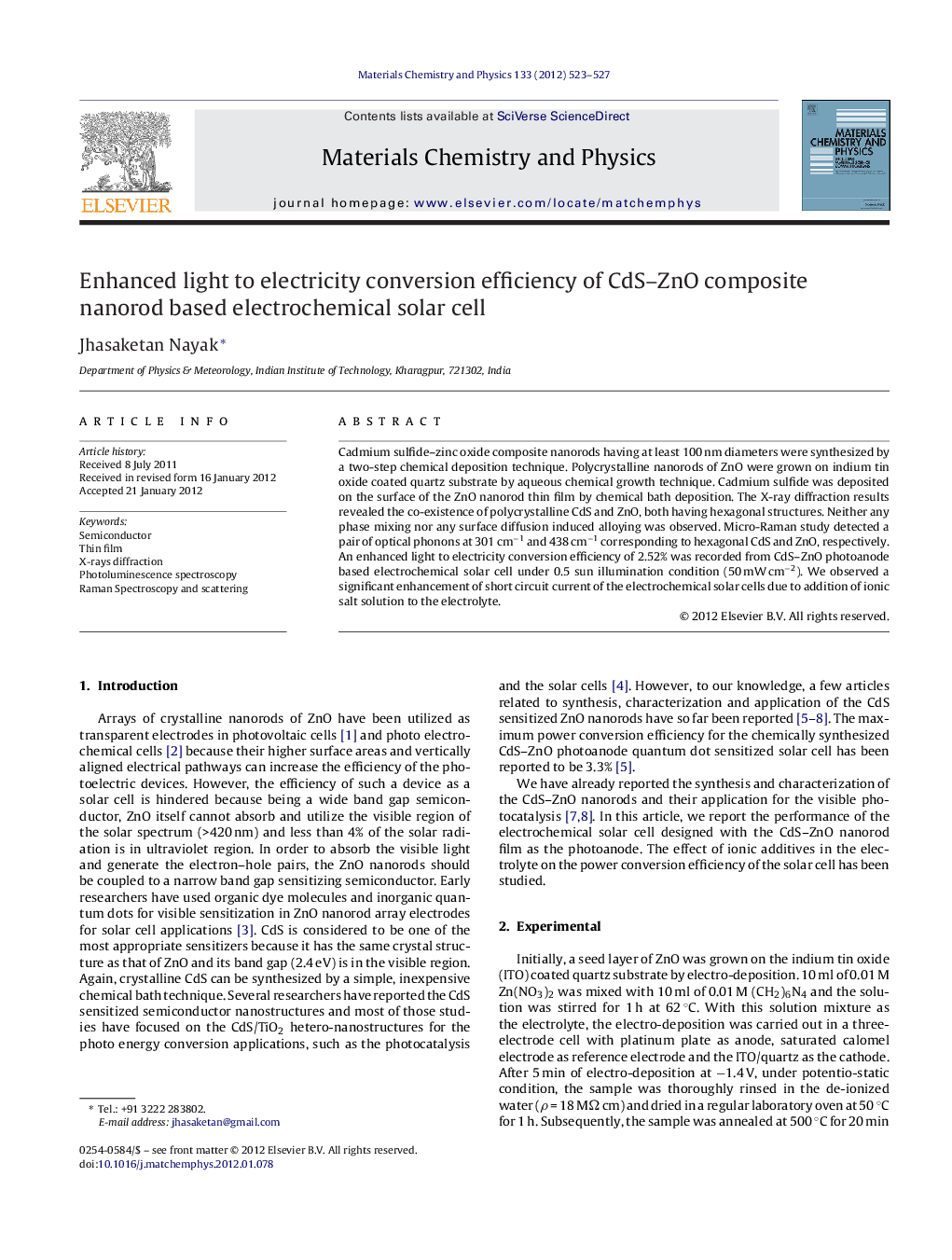| Article ID | Journal | Published Year | Pages | File Type |
|---|---|---|---|---|
| 1524243 | Materials Chemistry and Physics | 2012 | 5 Pages |
Cadmium sulfide–zinc oxide composite nanorods having at least 100 nm diameters were synthesized by a two-step chemical deposition technique. Polycrystalline nanorods of ZnO were grown on indium tin oxide coated quartz substrate by aqueous chemical growth technique. Cadmium sulfide was deposited on the surface of the ZnO nanorod thin film by chemical bath deposition. The X-ray diffraction results revealed the co-existence of polycrystalline CdS and ZnO, both having hexagonal structures. Neither any phase mixing nor any surface diffusion induced alloying was observed. Micro-Raman study detected a pair of optical phonons at 301 cm−1 and 438 cm−1 corresponding to hexagonal CdS and ZnO, respectively. An enhanced light to electricity conversion efficiency of 2.52% was recorded from CdS–ZnO photoanode based electrochemical solar cell under 0.5 sun illumination condition (50 mW cm−2). We observed a significant enhancement of short circuit current of the electrochemical solar cells due to addition of ionic salt solution to the electrolyte.
► CdS–ZnO composite nanorods were synthesized by a two-step deposition process. ► Co-existence of CdS and ZnO was confirmed by structural and optical characterizations. ► Light to electricity conversion efficiency of CdS–ZnO solar cell was 1.02%. ► The efficiency depends on the composition of electrolyte. ► An efficiency of 2.52% was recorded with electrolyte containing LiCl solution.
